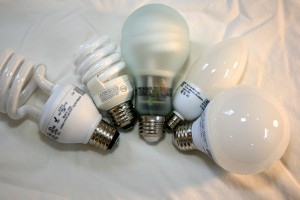I received a bunch of free CFL and LED bulbs from MassSave as a blogger. I was very clear that I was going to say what I wanted, not necessarily nice things. I held up my end of the bargain, as you’ll see below.
Update, 12/13/2014: Two important notes about this post. 1. It is old enough that some of these bulbs are no longer in production, let alone used by MassSave anymore. 2. This is, to me, the least interesting post on this website. Hopefully you’ll take a few moments to read other, more interesting posts on this website. Thanks!
MassSave is a great program which offers “free” energy audits to MA residents and
commercial property owners. Non-profit entities are not eligible for most services. (“Free” is in quotes because the funding comes from all of our energy bills, so we have, in fact, paid for the service. That’s fine and good in my book.)
If you haven’t had a free audit, go sign up for one, now. Go, I’ll wait. Done? Good. (If your last audit was four years ago, do it again. They’ve improved dramatically.) Continue reading

